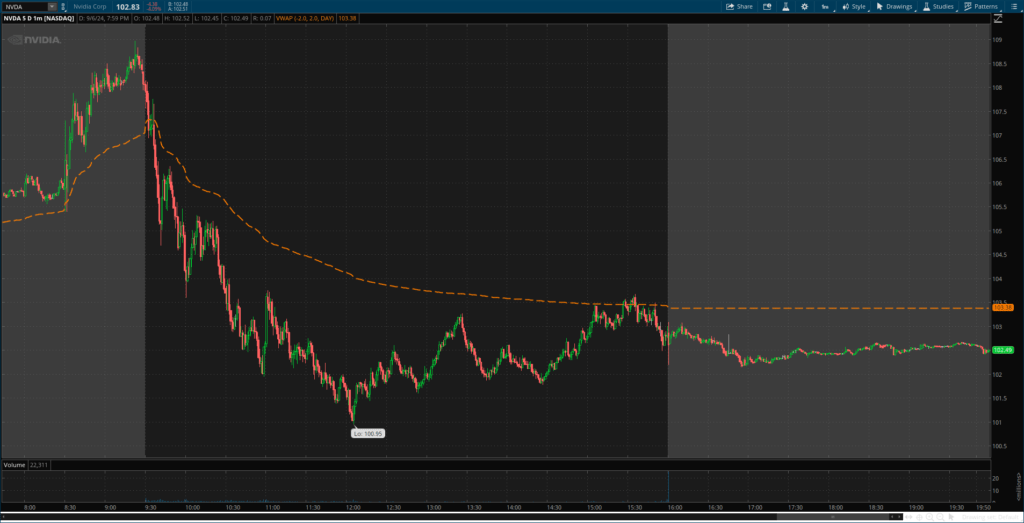Understanding Ratio Spreads
Understanding Ratio Spreads
Advanced Options Strategies for Experienced Traders
Introduction
Ratio spreads are sophisticated options strategies that can be a powerful tool in the arsenal of experienced traders. By buying and selling an unequal number of options contracts, ratio spreads provide unique flexibility to tailor risk-reward profiles and potentially achieve higher profits.
While these strategies offer exciting possibilities, they also demand a deeper understanding of options pricing, risk management, and market dynamics. In this comprehensive guide, we’ll unravel the complexities of ratio spreads, providing the knowledge you need to navigate this advanced territory.
Delving Deeper into Ratio Spreads

Defining Ratio Spreads
At its core, a ratio spread involves buying a certain number of options (long) and selling a different number of options (short) with a different strike price, all on the same underlying asset and with the same expiration date. The ratio indicates the number of short options relative to the long options. For instance, a 2:1 ratio spread means you sell two options for every one option you buy.
Types of Ratio Spreads
- Call Ratio Spread (Backspread): In a call ratio spread, you buy call options at a lower strike price and sell a greater number of call options at a higher strike price. This is often used when you anticipate a substantial rise in the underlying asset’s price.
- Put Ratio Spread (Backspread): In a put ratio spread, you buy put options at a higher strike price and sell a greater number of put options at a lower strike price. This is employed when you expect a substantial fall in the underlying asset’s price.
- Front Ratio Spread: This involves buying one at-the-money or slightly out-of-the-money option and selling multiple further out-of-the-money options. It’s a net credit trade with limited downside risk but capped profit potential.
The Anatomy of a Ratio Spread
Understanding the components of a ratio spread is crucial:
- Ratio: The number of short options divided by the number of long options (e.g., 2:1, 3:1).
- Strike Prices: The strike prices of the long and short options determine the potential profit and loss zones.
- Net Debit/Credit: Ratio spreads can be either debit spreads (where you pay a net premium) or credit spreads (where you receive a net premium).
Why Choose Ratio Spreads?
- Tailored Risk-Reward: By adjusting the ratio and strike prices, you can customize the risk and potential reward of the trade to match your outlook and risk tolerance.
- Higher Profit Potential: With the right market move, ratio spreads can offer higher profit potential than traditional debit spreads.
- Income Generation (Credit Spreads): Front ratio spreads, in particular, can generate income through the net credit received at initiation.
Real-World Examples of Ratio Spreads
Bullish Call Ratio Spread on Apple (AAPL): Deeper Analysis
Let’s revisit our earlier example with AAPL. If you buy two AAPL call options at $180 for $5 each and sell one AAPL call option at $200 for $2, your breakeven point is $188 (the lower strike price plus the net debit of $8).
- Scenario 1: AAPL rises to $220. Your profit would be $2,400 (($220 – $180) x 200 shares) – $800 (net debit) = $1,600.
- Scenario 2: AAPL stays at $190. Your profit would be $200 (the difference between the two call premiums).
- Scenario 3: AAPL drops to $170. Your loss would be limited to the net debit of $800.
Bearish Put Ratio Spread on Tesla (TSLA): Risk Management
In the TSLA example, where you buy one put option at $240 for $6 and sell two at $220 for $3 each, your maximum profit is $2,000 if TSLA is at or below $220 at expiration.
However, note the unlimited risk if TSLA rises significantly. For example, if TSLA reaches $280 at expiration, your loss would be $4,000 (($280 – $240) x 100 shares) + $600 (net credit) = $4,600. This is why risk management is crucial in ratio spreads.
Front Ratio Spread on Gold (GLD): Generating Income
Suppose gold (GLD) is trading at $180. You could create a 1:2 front ratio spread by:
- Buying one GLD 180 call for $5
- Selling two GLD 190 calls for $2 each
This would net you a $1 credit. Your maximum profit is this credit, achieved if GLD stays below $190. If GLD rises, your loss starts kicking in above $191, with a maximum loss if GLD is above $200 at expiration.
Risk-Reward Dynamics of Ratio Spreads
Understanding the risk-reward dynamics is paramount for successful ratio spread trading. Let’s break down the key elements:
Maximum Profit
The maximum profit of a ratio spread depends on the type of spread and the ratio used.
- Call Ratio Spread (Backspread): The maximum profit is theoretically unlimited if the underlying asset’s price rises significantly above the short call strike price.
- Put Ratio Spread (Backspread): The maximum profit is the difference between the strike prices minus the net debit, achieved when the underlying asset’s price falls to or below the short put strike price.
- Front Ratio Spread: The maximum profit is limited to the net credit received at the trade’s initiation.
Maximum Loss
- Call Ratio Spread (Backspread): The maximum loss is unlimited if the underlying asset’s price rises significantly.
- Put Ratio Spread (Backspread): The maximum loss is unlimited if the underlying asset’s price falls significantly.
- Front Ratio Spread: The maximum loss is the difference between the strike prices minus the net credit received.
Breakeven Points
Ratio spreads typically have two breakeven points:
- Upper Breakeven: The underlying asset’s price at which the spread becomes profitable.
- Lower Breakeven: The underlying asset’s price at which the spread starts incurring losses.
Calculating the breakeven points involves factoring in the net debit or credit, the strike prices, and the ratio of the spread.
Advanced Ratio Spread Strategies
Variable Ratio Backspread
In a variable ratio backspread, the ratio of long to short options changes as the underlying asset’s price moves. This allows traders to adjust their risk-reward profile dynamically as the market evolves.
Broken Wing Butterfly
A broken wing butterfly is a variation of the standard butterfly spread where the two short options have different strike prices. This strategy is used when the trader expects the underlying asset’s price to move more in one direction than the other.
Skewed Ratio Spread
A skewed ratio spread is a variation of the front ratio spread where the short options are placed closer to the current market price. This increases the probability of profit but reduces the potential reward.
Risk Management in Ratio Spreads
Due to their unique risk-reward profiles, effective risk management is crucial when trading ratio spreads. Here are some strategies to consider:
- Stop-Loss Orders: Place stop-loss orders to limit your losses if the market moves against your prediction.
- Position Sizing: Carefully determine the appropriate position size based on your risk tolerance and account size.
- Volatility Considerations: Be mindful of implied volatility when entering ratio spreads, as it can significantly impact your potential profit and loss.
- Adjusting Your Position: If the market moves unfavorably, consider adjusting your position by rolling the spread or closing it out to minimize losses.
Conclusion: Mastering Ratio Spreads
Ratio spreads are advanced options strategies that offer experienced traders a unique way to tailor their risk-reward profiles and potentially achieve higher profits. However, they are not without risks and require a thorough understanding of options trading principles.
By carefully analyzing market conditions, understanding the different types of ratio spreads, and implementing effective risk management strategies, you can harness the power of these versatile tools to enhance your trading arsenal and potentially boost your profitability.
Check out our article on:
Elevate Your Trading Game
Ready to take your options trading to new heights? Whether you’re a day trader, swing trader, or busy professional, we have you covered. Join our exclusive community of traders and gain access to our comprehensive educational resources, live trading sessions, and expert analysis. We’ll guide you through the intricacies of debit spreads and other advanced options strategies, helping you achieve your financial goals. Don’t miss out on this opportunity to become a more confident and profitable trader. Sign up today!
Below are the links:
To your success,

Billy Ribeiro is a renowned name in the world of financial trading, particularly for his exceptional skills in options day trading and swing trading. His unique ability to interpret price action has catapulted him to global fame, earning him the recognition of being one of the finest price action readers worldwide. His deep comprehension of the nuances of the market, coupled with his unparalleled trading acumen, are widely regarded as second to none.
Connect with us:





